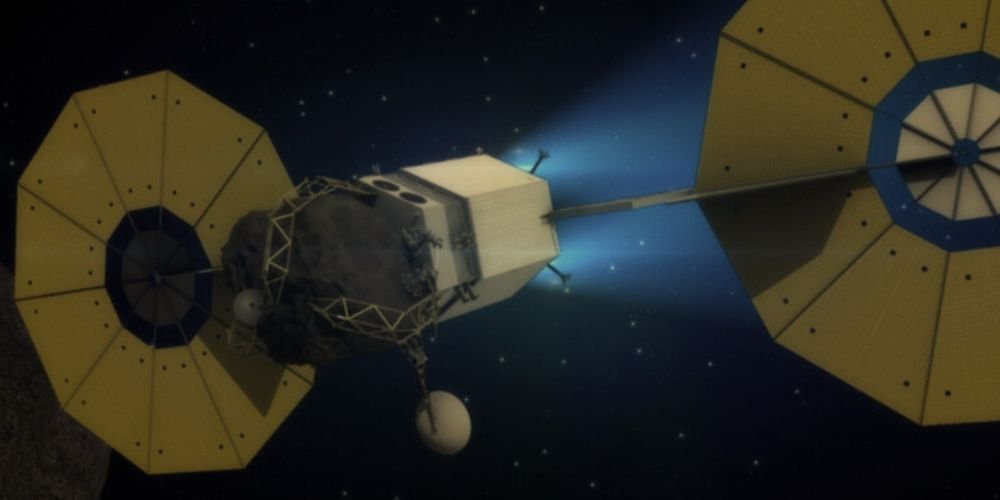Space exploration missions to asteroids represent humanity’s endeavor to unlock the secrets of our solar system’s ancient relics. These missions offer insights into the universe’s formation, potential resources for future space endeavors, and even insights into mitigating potential threats to Earth. In this article, we explore the significance, challenges, and achievements of space missions to asteroids, shedding light on humanity’s quest to unravel the mysteries of the cosmos.
Significance of Asteroid Exploration
Asteroids, rocky remnants from the early days of our solar system, hold valuable clues about its formation and evolution. Studying asteroids gives scientists insights into the processes that shaped our celestial neighborhood and the potential hazards they may pose to Earth. Additionally, asteroids are rich in water, metals, and minerals, which could one-day fuel future space exploration endeavors and support human settlements beyond Earth.
Understanding Solar System Origins
Asteroids are pristine time capsules that offer a glimpse into the early history of our solar system. By studying their composition, structure, and orbital dynamics, scientists can reconstruct the conditions that prevailed during the formation of planets and planetary systems billions of years ago. Asteroid exploration missions provide valuable data and samples that contribute to our understanding of the origins and evolution of the cosmos.
Assessing Planetary Defense
Some asteroids have orbits that intersect with Earth’s, posing potential impact threats and catastrophic consequences. Space exploration missions to asteroids allow scientists to study their trajectories, compositions, and physical properties, enabling the development of strategies for planetary defense and mitigation of potential impact hazards. By understanding the dynamics of near-Earth asteroids, we can better prepare for future encounters and safeguard our planet from potential collisions.
Exploiting Asteroidal Resources
Asteroids are rich in resources that could be mined and utilized to support future space exploration and human settlements beyond Earth. In particular, water-rich asteroids are valuable fuel and life-support resources for long-duration space missions and sustainable habitats in space. Asteroid exploration missions pave the way for developing technologies and techniques for prospecting, mining, and utilizing asteroidal resources in space.
Challenges of Asteroid Exploration
Space exploration missions to asteroids present numerous challenges and complexities that must be overcome to achieve success. These challenges include navigating vast distances, conducting precise rendezvous and proximity operations, and mitigating risks associated with asteroid surface conditions and spacecraft operations in deep space.
Navigating Interplanetary Distances
Asteroids reside vast distances from Earth, requiring spacecraft to travel long durations and navigate complex trajectories to reach their destinations. Interplanetary missions to asteroids must contend with gravitational interactions, orbital mechanics, and precise navigation to ensure accurate rendezvous and proximity operations with their target objects.
Conducting Precise Rendezvous Operations
Spacecraft must execute precise rendezvous and proximity operations to study asteroids up close and collect valuable data and samples. These operations require precise maneuvering, guidance, and control to approach, orbit, and interact with asteroidal bodies while avoiding collisions and maintaining safe distances.
Mitigating Surface Hazards
Asteroids have rugged, irregular surfaces with diverse geological features and potential hazards, such as boulders, cliffs, and regolith. Spacecraft must navigate these surface conditions and conduct close-up observations and sampling without jeopardizing mission safety or integrity.
Achievements and Future Directions
Despite the challenges, space exploration missions to asteroids have achieved significant milestones and contributed valuable insights into the nature and diversity of these celestial bodies. From robotic missions to sample return missions, these endeavors have paved the way for future exploration and utilization of asteroidal resources.
Robotic Exploration Missions
Robotic spacecraft such as NASA’s NEAR Shoemaker, Japan’s Hayabusa, and ESA’s Rosetta have successfully explored asteroids, conducting close-up observations, mapping surface features, and studying their compositions and origins. These missions have provided valuable data and images that have enhanced our understanding of asteroidal bodies and their role in the solar system.
Sample Return Missions
Sample return missions such as NASA’s OSIRIS-REx and Japan’s Hayabusa2 have successfully collected samples from asteroids and returned them to Earth for analysis. These missions provide scientists with pristine materials from asteroids, enabling detailed laboratory analysis to decipher their compositions, structures, and histories.
Future Directions in Asteroid Exploration
Future space exploration missions to asteroids will focus on expanding our knowledge of these celestial bodies, characterizing their physical properties, and assessing their potential as resources for future space endeavors. Proposed missions include asteroid deflection experiments, resource prospecting missions, and human exploration initiatives to establish human outposts or mining operations on asteroidal bodies.
Conclusion
Space exploration missions to asteroids represent humanity’s quest to unlock the mysteries of the cosmos and expand our presence beyond Earth. By studying these ancient relics of the solar system, we gain insights into planetary formation, resource utilization, and potential hazards to Earth. Despite the challenges, achievements in asteroid exploration pave the way for future endeavors to explore, utilize, and ultimately inhabit the vast reaches of space.









